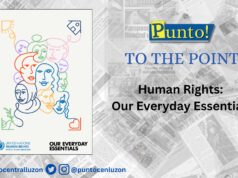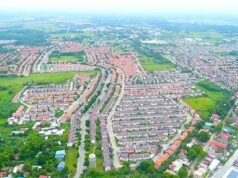This weekend, as we troop to cemeteries or memorial parks to observe the solemnities of the traditional feast of the dead, we tend to overlook the significance of these places to our local heritage.
Under everyday conditions people tend to associate the sementeryo or camposanto to the scary, the gory, the sorrowful or the haunted. In my trips I have encountered cemeteries or memorials as resting places that are also heritage showcases, whether because of their significance to the people in those communities, their aesthetic values or their historic and cultural importance.
Come to think about it among the most visited tourist attractions in the world, such as the Pyramids of Giza in Egypt, the Taj Mahal in Agra, India, or the Terracotta Tomb Warriors in China, are actually related to the cult of the dead. In the Philippines, the hanging coffins of Sagada or the mummies of Kabayan, even the famous manunggul jar, depict how our ancestors dealt with death or thought of the after-life. In fact, funerary furniture such as porcelain jars and gold ornaments which were buried with the dead have been unearthed by archaeologists in various locations in the country.
In our local setting, art and architecture buffs are bound to encounter items of considerable interests in the cemetery. Heritage scholar Ms. Joy Rosal – Sumagaysay in her study of cemeteries in Iloilo listed down points that associate art with death: funerary chapels, stone entrances and enclosures, nichos, and stone cross markers.
To those I would add art works such as the monuments, sculptures or reliefs which may be found in the cemeteries. Some cemeteries are even adorned with works of National Artists such as Napoleon Abueva. Sometimes, cemeteries themselves are actually part of the local landscape, as in the case of one cemetery in the hilly area of Olongapo City, which motorists pass by on the way to Zambales.
In Tuguegarao City, Cagayan, the old cemetery entrance still have the original bricks intact but have sadly deteriorated in time, though it is a testament to the brick tradition that once flourished in that region. In Camiguin you could actually snorkel to see a sunken cemetery, the effect of volcanic eruptions.
In terms of architecture, contrary to the common notion that death is a great equalizer, the stark contrast between the home of the living and the house of the dead has never been as obvious as in the cemetery where we see mausoleums so grand and opulent compared to shanties in the slums. Hence there are urban poor people who eke out a living in the cemetery or squat there.
A visit to memorial parks all over Pampanga even on an ordinary day, such as La Pieta in Angeles City, will be quite a beginner’s course in different architectural genres, ranging from the neoclassical (with Greek-inspired columns on the entrance) to the post-modern (possibly inspired by Frank Lloyd Wright or Phillip Johnson or even Frank Gehry.) Chinese cemeteries are also places of considerable interest because of the distinct architectural style and the unique traditions that stand out from the largely westernized orientation on how our more common cemeteries were built. If I am not mistaken, a walking tour that counts mausoleums in the Binondo/China Town area as part of the itinerary is being offered by famous travel expert Ivan Man Dy.
Aside from the aesthetic considerations, cemeteries or memorial places may also be of historic significance because of the events that took place there or because of the people who were buried there.
The cemetery in Clark Air Base is dedicated to the gallantry of the fallen dead from various military campaigns such as the second World War. Libingan ng mga Bayani is the final resting place for some of our dignitaries such as former presidents or military officials or noble soldiers who are given the honor of being laid to rest in that hallowed ground. In Tagbilaran City, Bohol there is a Dagohoy Masonic Cemetery, unique on its own, because of its association to that brotherhood of men and the fact that it used to be the burial ground for those who were refused Christian burials. If we remember our history lessons, Francisco Dagohoy of Bohol led the longest revolt in the entire country which spanned for more than seventy years.
Our old cemetery here in San Fernando houses the remains of notable people who have made important contributions in the story of our province such as the Lazatin family, former senator Sotero Baluyut, past San Fernando mayors, among others. The Abad Santoses have a mausoleum there sans Pedro Abad Santos whose remains are yet to be found to date. Just looking at the names and dates in the family plots or mausoleums could give us lessons in genealogy.
In San Fernando remains of our local heroes have been moved to the location of the monuments put up in their honor, like those of revolutionary heroine Nicolasa Dayrit Panlilio at the Henson-Hizon House and revolutionary governor Tiburcio Hilario at the Heroes Hall in Barangay San Juan. I read somewhere that the remains of General Maximino Hizon are at the base of his monument at the Capitol Park grounds.
As we remember our dead this weekend, we also have the chance to remember our history and appreciate our heritage, all in the confines of the sementeryo.




